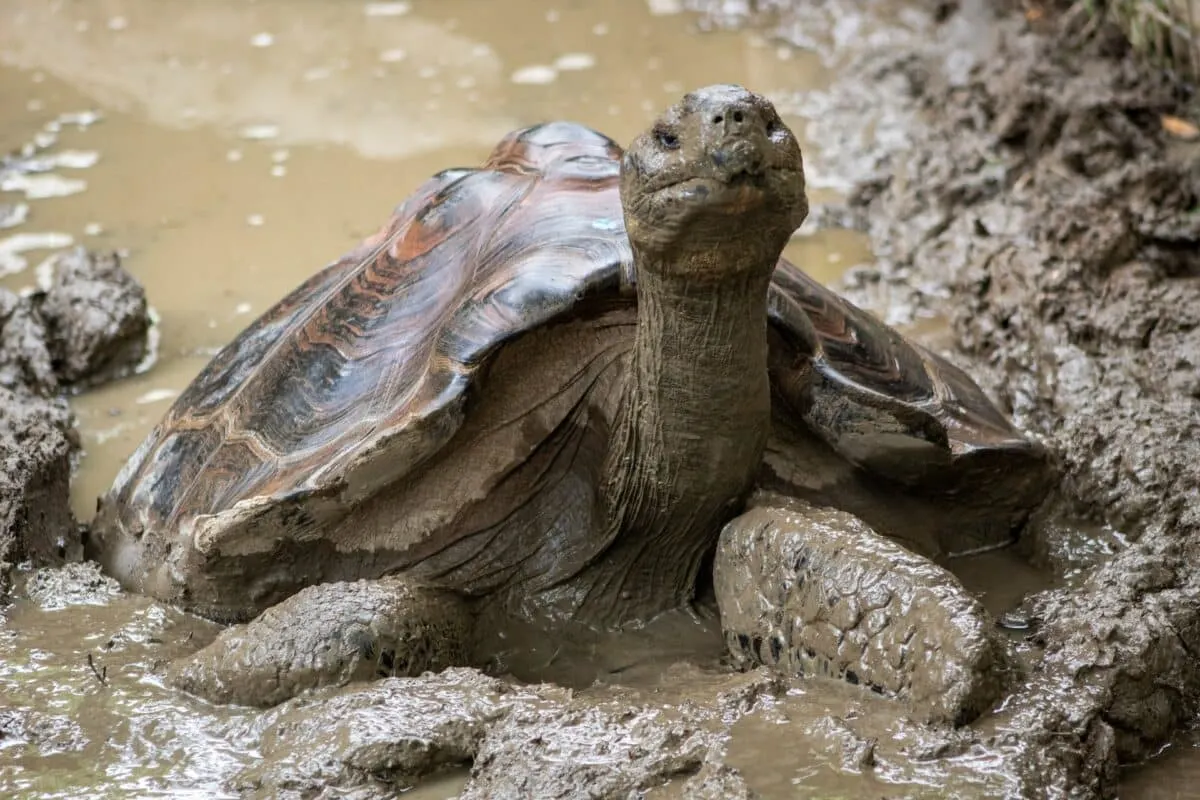In this post we’re going to find out which one is the longest living species of turtle in the world. But maybe more importantly, we’ll uncover their impressive adaptations that make it possible.
Have you ever considered which turtle species has the longest lifespan in the world? Many people are surprised to learn that it’s none other than the giant tortoise, which can live for up to 200 years or longer!
In this post, we’ll dive deep into why some turtles are able to live for over two centuries and explore what makes these creatures so special. From their diets, mainly of plants and grasses, to their incredible hibernation abilities, we’ll explain how they were adapted to become one of nature’s longest-living creatures.
Let’s explore these impressive reptiles – maybe we’ll uncover the secret to a long life?
Jump ahead to any section of your liking below:
Introducing the Longest Living Species of Turtle in the World: The Giant Tortoise
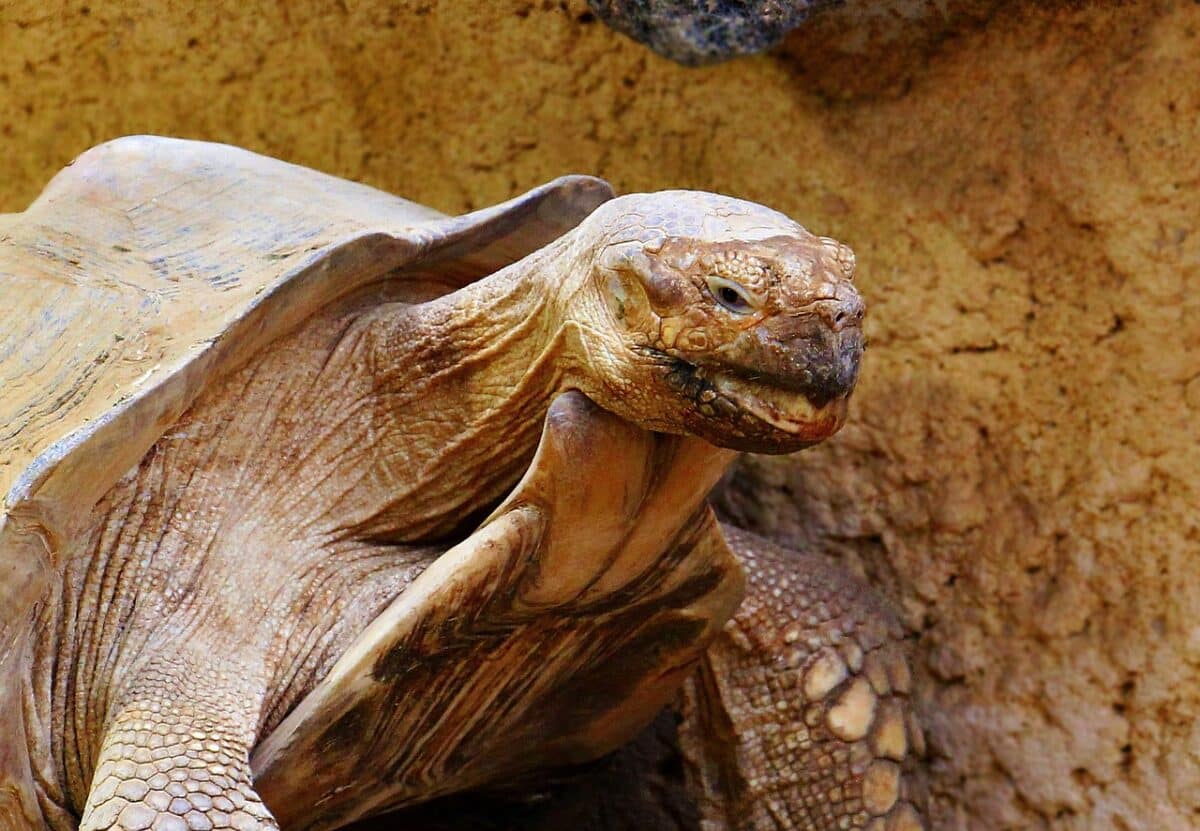
Although all turtles are known for having extremely long lifespans, one of them is particularly impressive – namely, the giant tortoise. The giant tortoise is an incredibly fascinating animal that has captured the attention of people around the world.
Belonging to the family Testudinidae, this species is known for its exceptionally long lifespan and unique physical traits. Let’s delve into the world of the giant tortoise and explore what makes it one of nature’s longest-living animals.
Read about another record-breaking turtle here.
Physical Characteristics
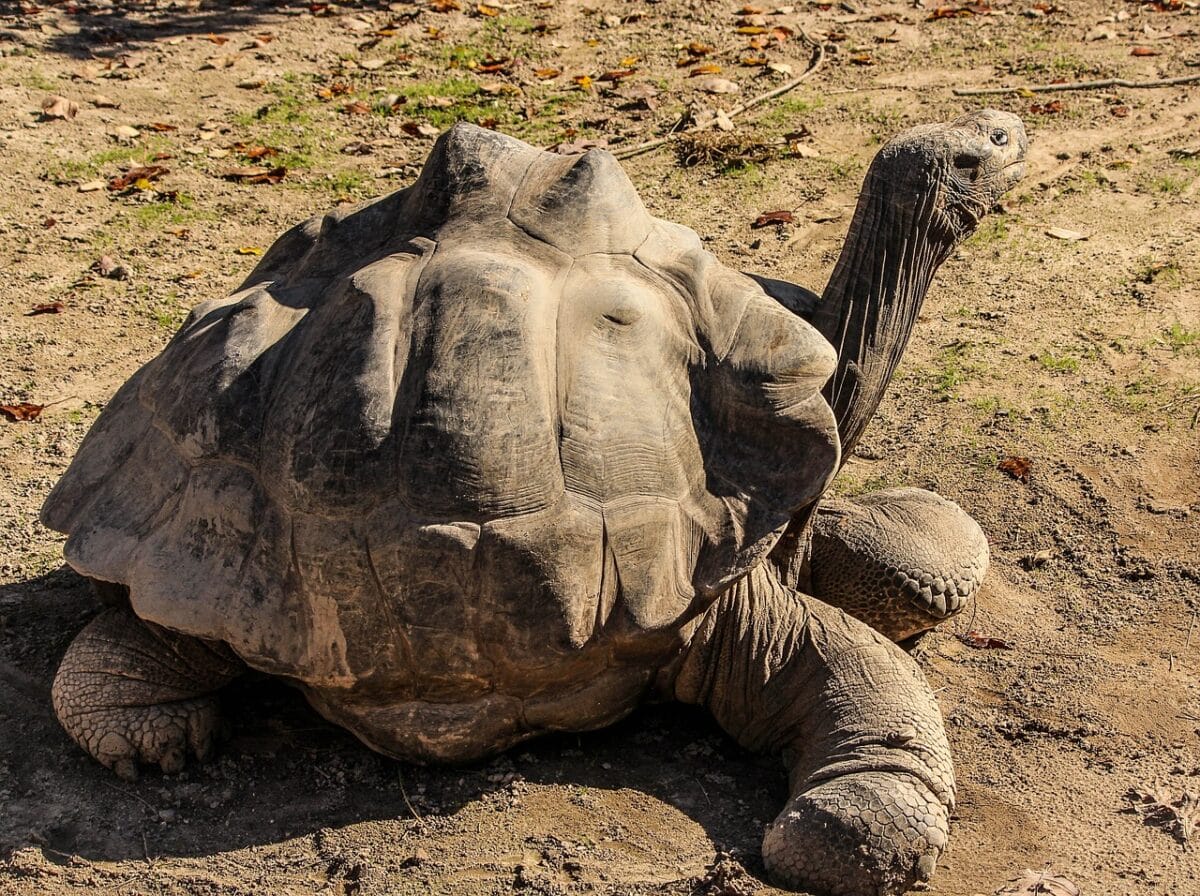
One of the most impressive features of this species is its size. These turtles typically reach an average weight of 500 pounds and can grow up to 5 feet long.
They have a distinctive heavy body, thick legs, and a dome-shaped shell. In terms of color, it has a brownish-yellow or dark green shell, and their skin is grayish-brown.
Habitat
This impressive species of turtle is native to the Galapagos Islands. Here, the giant tortoise plays an extremely vital role in the Islands’ distinct ecosystems, which are more than 600 miles away from the Ecuadorian coast.
Typically they prefer lowland areas that are dry, although some inhabit the misty highlands of Santa Cruz. Their habitat also varies depending on the preferred diet of the different types of giant tortoises.
Diet
These turtles have a herbivorous diet consisting mainly of vegetation, such as grasses, cacti, and other plants.
Giant tortoises can easily break down tough plant fibers and extract nutrients with their unique digestive system. They can also consume significant amounts of water and survive for several months without it.
The giant tortoises with saddleback-shaped shells tend to feed mostly on cacti (and therefore live in arid climates.) Conversely, giant tortoises with dome-shaped shells prefer to munch on grass and resultantly inhabit the more lush islands.
Reproduction
The giant tortoise has a slow reproduction rate, with females laying only a few eggs on a yearly basis. She buries her eggs underground where they remain incubated for six to eight months before hatching.
The temperature determines the gender of giant tortoises during egg incubation, distinguishing them from other turtle species. This is a process that goes by the name of “temperature-dependent sex determination.” According to research, incubation of eggs at a temperature of 81°F or lower, the tortoises that eventually hatch will be male. If the incubation happens at a higher temperature, the hatchlings will be female.
To learn more about this process, read our post that dives into the world of baby turtles.
Life Expectancy
The giant tortoise has an incredibly long lifespan, with some individuals estimated to live over 200 years. One key factor adding to their longevity is their incredibly slow metabolism. They can go without food or water for long periods and hibernate when food and water are scarce. No wonder they’re the longest living species of turtle in the world!
The giant tortoise is an extraordinary animal that has evolved over millions of years to survive in harsh environments. Their unique physical traits and slow metabolism contribute to their exceptional longevity. These creatures are nature’s marvels and remind us how vital it is to conserve our planet’s ecosystems.
An overview
| Information | Giant Tortoise |
|---|---|
| Lifespan | The longest lifespan of any turtle species, with some individuals estimated to live over 200 years. |
| Adaptations | A shell-protected body, a slow metabolism, and hibernation abilities that help them survive in harsh environments. |
| Diet | Herbivorous, consisting mainly of vegetation such as grasses, cacti, and other plants. |
| Habitat | Found in the Galapagos Islands and play a vital role in the islands’ distinct ecosystems. |
| Lifespan in the wild | Influenced by factors such as habitat destruction, hunting, and disease. |
| Lifespan in captivity | Can live even longer in captivity, with some recorded to live for up to 250 years. |
An Insight Into the Anatomy and Adaptations of Giant Tortoises
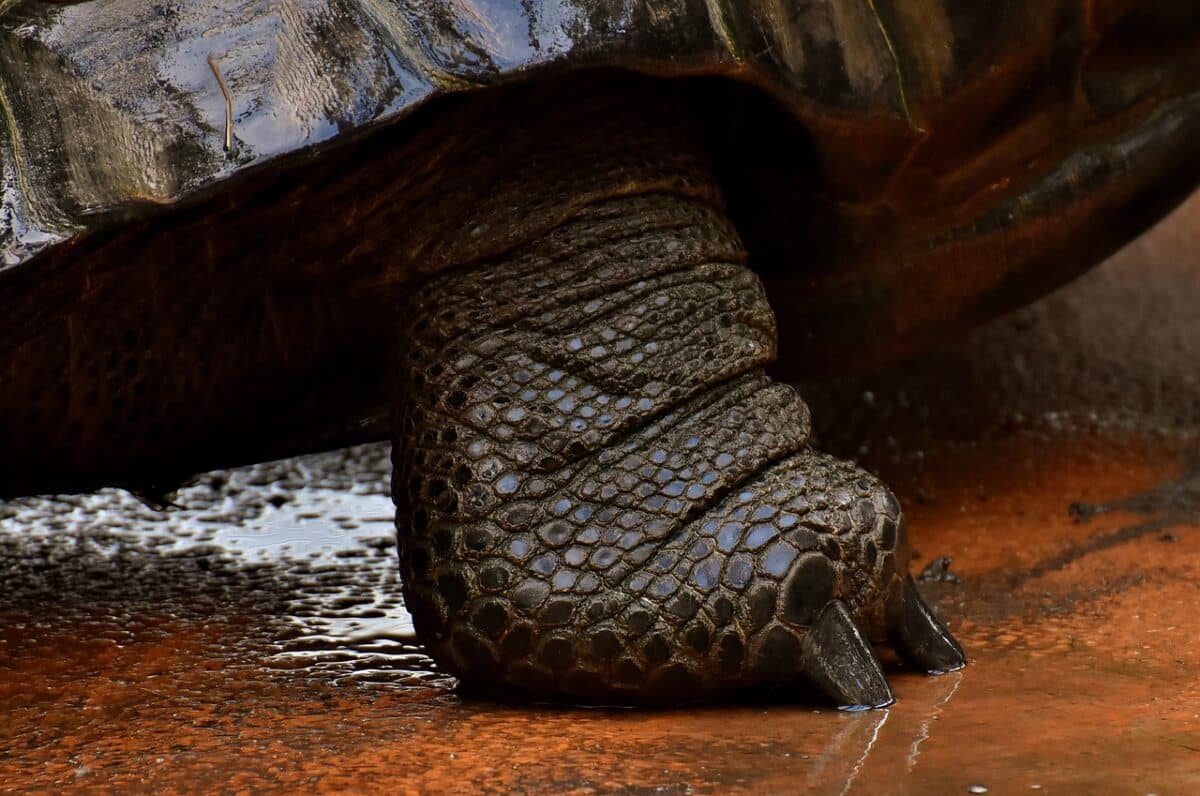
Giant tortoises have several adaptations that help them survive in their habitats, contributing to their long lifespans.
Here are a few notable ones:
#1 Shell-Protected Body
The shell is the most iconic feature of a tortoise, and it’s a crucial part of their anatomy. They protect against predators and harsh environmental conditions. Some species can retract their heads and limbs into their shells, providing an extra protection layer.
#2 Slow Metabolism
Tortoises have low metabolic rates, which slows down their aging process. This is so because their bodies use energy more efficiently than other animals.
#3 Hibernation Abilities
Tortoises can go into a state of hibernation for months or even years. Their metabolism slows down during hibernation, reducing the need for food and water. It helps them save energy and survive harsh weather conditions.
#4 Herbivorous Diet
Tortoises mainly feed on grasses and other plant material. These turtles are not picky eaters and can survive on various plants, including cacti and succulents, resulting in a nutrient-rich diet that contributes to their long lifespan.
Life Expectancy: In Captivity Vs. The Wild
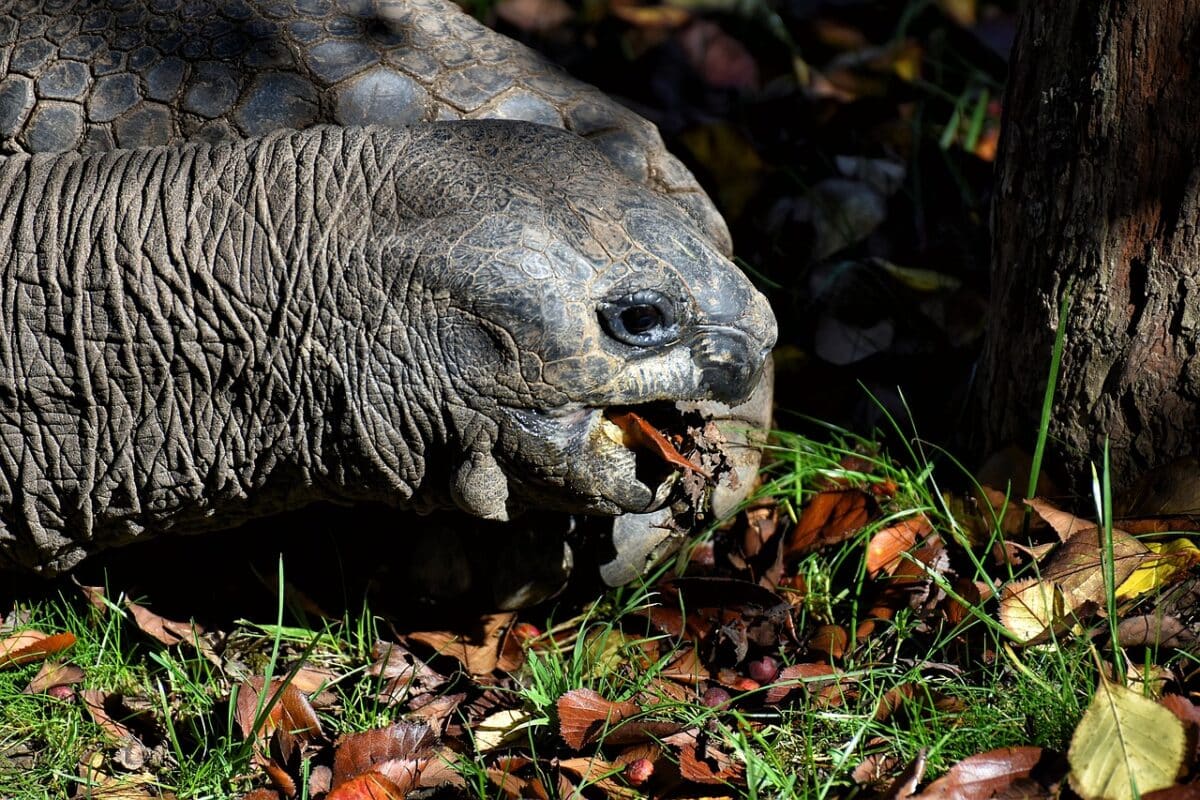
Giant tortoises have an incredibly long lifespan, up to 200 years or more. The lifespan of giant tortoises depends on many factors – such as their habitat, diet, and environmental conditions.
Wild Longevity
Giant tortoises in the wild can live for more than a century. Several factors, including habitat destruction, hunting, and disease, can influence a giant tortoise’s lifespan.
Longevity In Captivity
Tortoises can live even longer in captivity than in the wild. With access to high-quality food, protection from predators, and proper care from their owners, some giant tortoises in captivity have reached ages of over 250 years.
Oldest Recorded Tortoise
The oldest known tortoise is believed to be the giant tortoise named Adwaita. Although his exact age is yet to be confirmed, it is believed that he lived for over 250 years before his death in 2006.
Another strong contender for the title is Jonathan, who is currently the world’s oldest living giant tortoise. He was born in the Seychelles in the Indian Ocean in 1832 and has lived on the island of St. Helena ever since. According to estimations he is over 188 years old and is still in good health. People come from all over the world to visit him and he is one of the most popular sightings on the island.
Giant tortoises are fascinating creatures known for their impressive longevity and unique adaptations. Their slow metabolism, vegetarian diet, and hibernation abilities contribute to their remarkable lifespan, making them one of nature’s longest-living survivors.
An Overview of Their Natural Habitats and Behavior Patterns
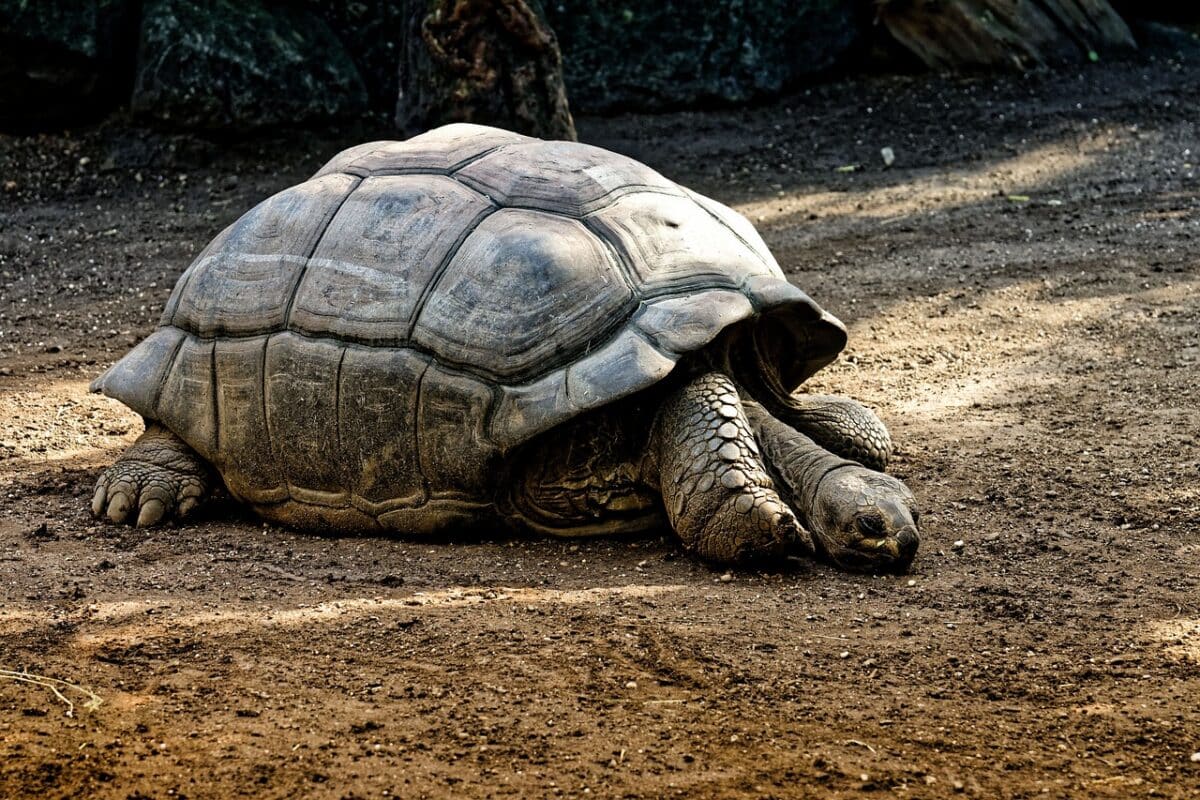
- Giant tortoises are present on the islands of the Galapagos and Aldabra.
- They are vegetarians and graze on grasses and plants.
- These reptiles are known for their slow movements and gentle nature.
- Also, these creatures are primarily land-dwelling, solitary animals but possess surprising swimming abilities.
- One of the unique characteristics of giant tortoises is their capacity to endure extended periods without food or water.
- In the wild, they can dig shallow holes and wait out dry spells, returning to the surface once rainfall returns.
How To Prevent This Species From Becoming Extinct
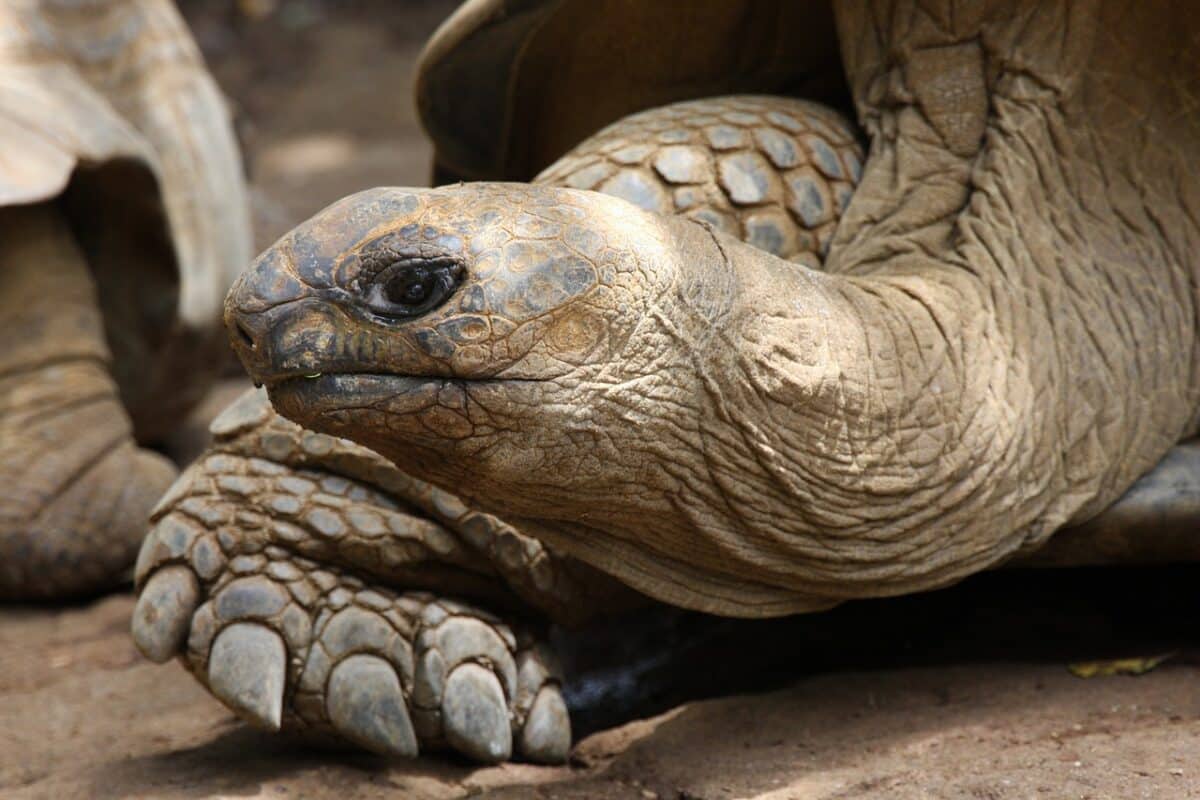
Unfortunately, the giant tortoise is endangered due to habitat destruction, poaching, and the introduction of non-native species to their habitats.
But there are steps we can take to protect these long-living creatures:
- Support conservation organizations that protect tortoise habitats and promote sustainable practices.
- Reduce your carbon footprint by consuming eco-friendly products and using public transportation.
- Refrain from supporting the pet trade that sells turtles or tortoises as exotic pets.
- Volunteer at conservation groups and join local awareness campaigns to help protect the animals.
Discover Where You Can Observe Giant Tortoises In Their Natural Habitats.
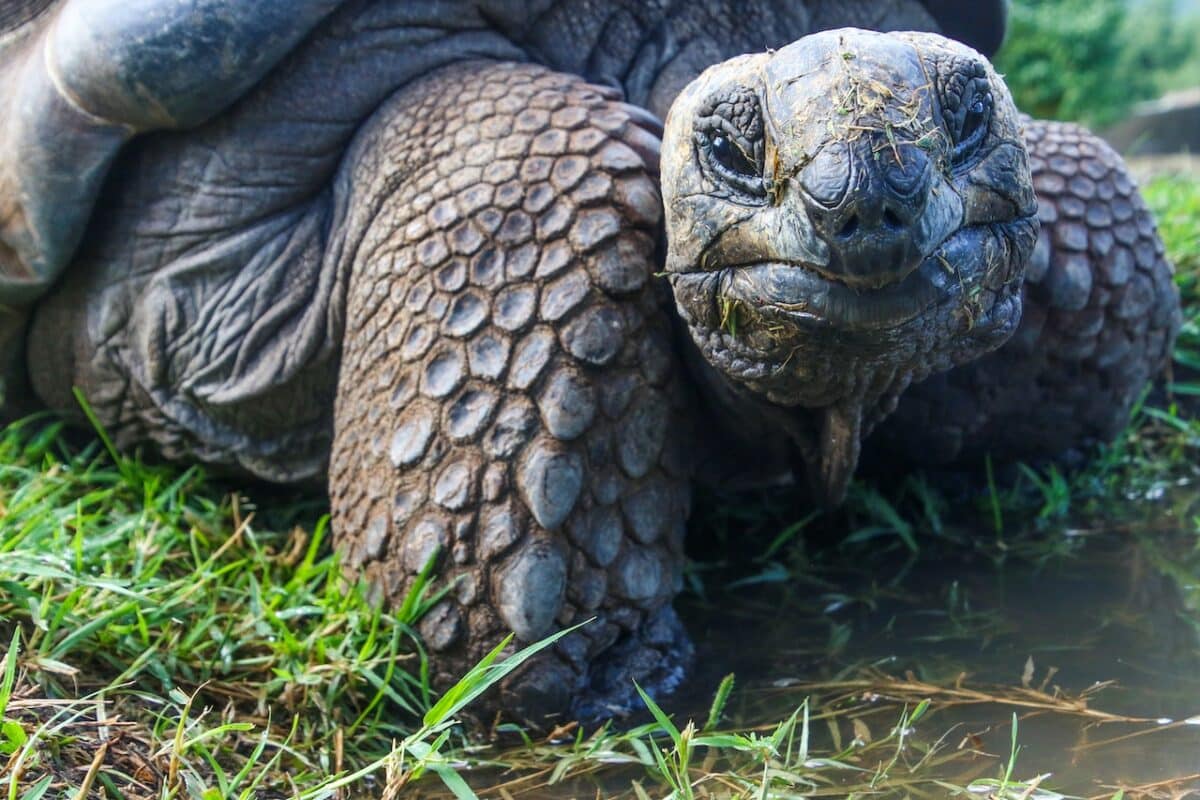
- The Galapagos and Aldabra Islands are the sole locations to witness giant tortoises in their natural habitats, both safeguarded by national parks.
- The Charles Darwin Research Station and the Galapagos Tortoise Reserve are dedicated to conserving giant tortoises on the Galapagos Islands.
- Guided tours and educational programs allow visitors to learn about giant tortoises’ unique evolutionary adaptations.
- Aldabra Atoll also provides tours to observe giant tortoises in their natural environments.
- The conservation program ensures visitors do not interfere with animals’ natural behavior patterns.
Despite their extended lifespans, giant tortoises are currently endangered, emphasizing the significance of implementing measures to conserve and protect them. By supporting conservation initiatives and adjusting our daily habits, we can help protect these slow-moving yet vital species.
The giant tortoise isn’t the only member in its family that’s facing extinction due to human activity – read our post on their biggest threat causing their populations to decline.
For those who wish to see giant tortoises in their natural habitat, visiting national parks or conservation reserves on Galapagos and Aldabra islands is the best way to witness these amazing creatures in their element.
Key Points
| The giant tortoise is an incredibly fascinating animal that has captured the attention of people around the world. Belonging to the family Testudinidae, this species is known for its exceptionally long lifespan and unique physical features. |
| These turtles typically reach an average weight of 500 pounds and can grow up to 5 feet long. They have a distinctive heavy body, thick legs, and a dome-shaped shell. |
| In terms of color, the giant tortoise has a brownish-yellow or dark green shell, and their skin is grayish-brown. |
| Tortoises mainly feed on grasses and other plant material. These turtles are not selective eaters and can survive on various plants, including cacti and succulents, resulting in a nutrient-rich diet that contributes to their long lifespan. |
| The oldest known tortoise, Wan Aldaas bra giant tortoise named Adwaita, lived for over 250 years before his death in 2006. |
Conclusion
We hope you’ve enjoyed this look into why some turtles have such long lifespans and how their unique adaptations make them one of nature’s longest-surviving species. From diets adapted to whatever’s available to the amazing ability to hibernate for weeks or months, it’s no wonder giant tortoises have managed to survive over time and live past the age of 200!
So remember, if you come across one of these ancient creatures out in nature. Take a moment to acknowledge their remarkable lifespan and stunning appearance. And as always, remember to stay informed about environmental changes that could affect the future of these unique species!
Thank you for reading this article on the longest living species of turtle in the world! Continue your exploration on the family of reptiles by reading about the giant lizard known as the Monitor Lizard.
- Octopus Stuck to Diver’s Back and Won’t Come Off - April 25, 2024
- Magpie Bird Is Reunited with Her Dog Best Friend - April 24, 2024
- Dog Saves Another Dog From Drowning in Fish Pond - April 23, 2024

